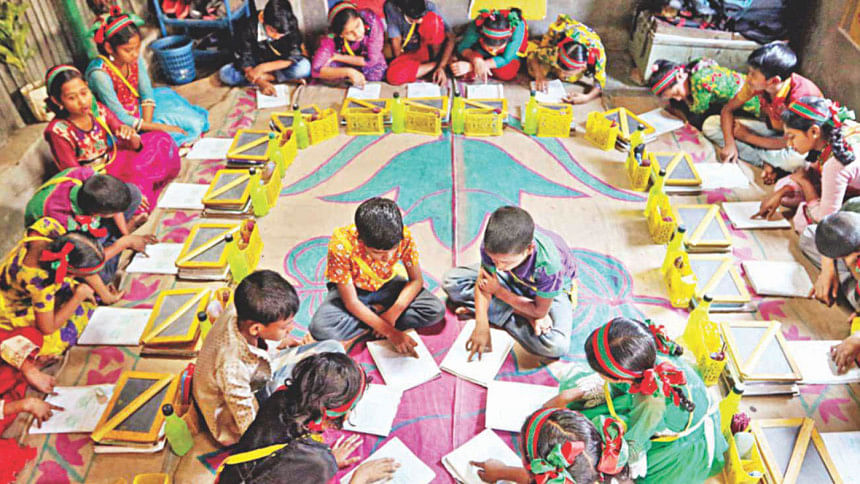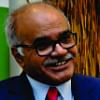Human development in Bangladesh: What do the statistics tell us?

This year, Bangladesh marks the Golden Jubilee of its independence. The whole nation is celebrating this milestone with joy and pride. In 1971, Bangladesh emerged like a phoenix from the ashes of destruction after a nine-month Liberation War. At its birth, doubts were expressed by some about the future of the new country and yes, there have been some turns and twists in its development trajectory. But today, as it is being heralded by many as a development miracle, we have every reason to celebrate.
Over the years, Bangladesh has made tremendous progress on the fronts of economic and human development. It has enjoyed an annual average GDP growth rate of nearly six percent since 1991, resulting in an economy of USD 330 billion in 2019 from a USD 35 billion economy in the mid-1990s. Over the same period, per capita income has increased from USD 300 to about USD 2,064—a seven-fold increase. The incidence of poverty, as measured by the headcount ratio based on a national poverty line, has declined from 58 percent in 1990 to nearly 21 percent in 2019. More than 24 million people were thus lifted out of poverty.
Today, Bangladesh is in the medium human development category, and in 2015, it moved to the "lower-middle-income" country category from the "low-income" category. It is moving towards official LDC graduation in 2024 and looks forward to achieving "developed country" status by 2041. Having achieved most of the targets of the Millennium Development Goals for the year 2015, Bangladesh is now working hard to achieve the Sustainable Development Goals set by the world community.
From 1990 to 2019, Bangladesh's Human Development Index (HDI) value improved from 0.394 to 0.632—a nearly three-fifth increase. Thus, even with a lower GDP per capita (in 2017), compared to countries like India and Pakistan, Bangladesh achieved a life expectancy at birth of nearly 73 years, compared to nearly 70 years in India and 67 years in Pakistan. In 2019, the under-five mortality rate in per 1,000 live births was 31 in Bangladesh, 34 in India and 67 in Pakistan respectively. The overall Gross Domestic Income score for Bangladesh in 2019 was 0.904, higher than those of India (0.820) and Pakistan (0.745).
During the last three decades (1990-2019), Bangladesh reduced its infant mortality rate from nearly 100 per 1,000 live births to just 21 per 1,000 live births, and the maternal mortality rate dropped to 165 from 594 deaths per 100,000 live births. The prevalence of stunting in children declined from 55 percent to 28 percent, and the incidence of underweight children was reduced from 56 percent to 22.8 percent. In education, the adult literacy rate in the country improved to 74 percent in 2018 from just 35 percent in 1990. Between 1990 and 2019, the net primary enrolment has risen from 75 percent to 97 percent, and secondary enrolment is up from less than 20 percent to 66 percent. One remarkable progress has been in female secondary education enrolment and in that indicator, Bangladesh has done better than India and Pakistan. One of the major achievements in education is reducing the dropout rates from around 50 percent in 2005 to below 18 percent in 2019.
The phenomenal human development achievements of Bangladesh over the years did not occur automatically. Several factors have contributed to that success. At least five can easily be identified. The first is better access to basic social services, which has resulted in improved human development outcomes. For example, maternal mortality rate has declined because of factors such as antenatal care visits, delivery at facility centres, presence of skilled birth attendants, post-natal care for mothers and fulfilment of the unmet needs for family planning, etc. Better access to women's education and employment has helped in reducing infant and child mortality.
The second factor is human development-friendly policies. The impressive achievement in life expectancy at birth can be attributed to better results in various critical outcomes, including reduced maternal, infant and under-five mortality rates, improved child nutritional outcomes, and increased vaccination coverage. Proactive policies in areas of child immunisation, contraceptive adoption and oral rehydration saline (ORS) contributed to better health outcomes. Better school enrolment has been possible due to government efforts in several policies, such as free and compulsory primary education for all, which in 2016 was extended to grade eight, and stipend programmes at primary and secondary levels. Rapid poverty reduction in Bangladesh was possible, to a large extent, due to targeted interventions. The National Social Security Strategy addressed the triple problems of poverty, vulnerability and marginalisation.
The third factor is the indomitable spirit of the people. Higher economic growth over the last three decades was possible because of a rapidly growing economy, propped up by an increased flow of remittances and foreign exchange earnings from garment exports. In both cases, the indomitable spirit of the people played a major role.
Fourth, women's empowerment in various areas—economic, social and political—has played a role in advancing human development in Bangladesh. Women have initiated different social movements in stopping early marriage, ownership of assets including land, family courts, etc.
Finally, development partners, particularly NGOs, have played an instrumental role in providing basic social services to people. For example, micro-finance institutions like Grameen Bank have provided much-needed loans to small entrepreneurs, and BRAC's non-formal education programme has contributed to enhanced enrolment. Targeted programmes, such as BRAC's work on separate toilets for girls in schools to increase female enrolment, have also been very effective.
Even though over the past 50 years, Bangladesh has made impressive progress in overall human development, the achievements have been uneven across several planes—socio-economic groups, regions, gender, rural-urban divide and so on. Furthermore, in spite of the phenomenal human development progress, significant human deprivations still remain on various fronts, and as the country looks forward to the next 50 years, human development challenges remain. Some of these are lingering challenges, like poverty and gender inequality; some are deepening challenges, like inequalities and climate change; and some are, undoubtedly, emerging challenges, like human security and the Covid-19 pandemic. The global scenario will also give rise to human development challenges for Bangladesh. These are some of the issues that need to be tackled in future.
Selim Jahan is a former Director, Human Development Report Office, UNDP.

 For all latest news, follow The Daily Star's Google News channel.
For all latest news, follow The Daily Star's Google News channel. 



Comments